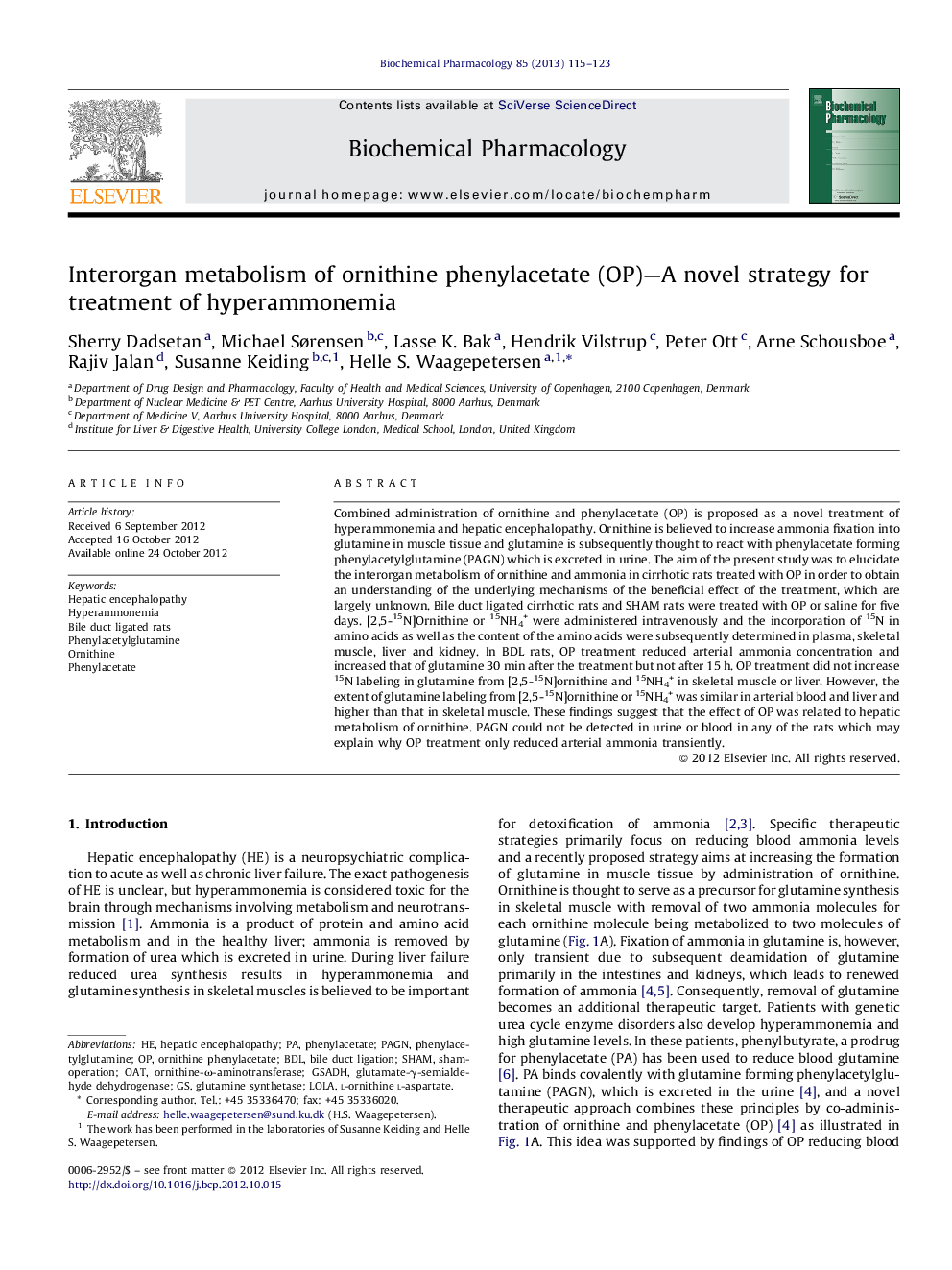| Article ID | Journal | Published Year | Pages | File Type |
|---|---|---|---|---|
| 5823802 | Biochemical Pharmacology | 2013 | 9 Pages |
Abstract
Combined administration of ornithine and phenylacetate (OP) is proposed as a novel treatment of hyperammonemia and hepatic encephalopathy. Ornithine is believed to increase ammonia fixation into glutamine in muscle tissue and glutamine is subsequently thought to react with phenylacetate forming phenylacetylglutamine (PAGN) which is excreted in urine. The aim of the present study was to elucidate the interorgan metabolism of ornithine and ammonia in cirrhotic rats treated with OP in order to obtain an understanding of the underlying mechanisms of the beneficial effect of the treatment, which are largely unknown. Bile duct ligated cirrhotic rats and SHAM rats were treated with OP or saline for five days. [2,5-15N]Ornithine or 15NH4+ were administered intravenously and the incorporation of 15N in amino acids as well as the content of the amino acids were subsequently determined in plasma, skeletal muscle, liver and kidney. In BDL rats, OP treatment reduced arterial ammonia concentration and increased that of glutamine 30Â min after the treatment but not after 15Â h. OP treatment did not increase 15N labeling in glutamine from [2,5-15N]ornithine and 15NH4+ in skeletal muscle or liver. However, the extent of glutamine labeling from [2,5-15N]ornithine or 15NH4+ was similar in arterial blood and liver and higher than that in skeletal muscle. These findings suggest that the effect of OP was related to hepatic metabolism of ornithine. PAGN could not be detected in urine or blood in any of the rats which may explain why OP treatment only reduced arterial ammonia transiently.
Keywords
Related Topics
Health Sciences
Pharmacology, Toxicology and Pharmaceutical Science
Pharmacology
Authors
Sherry Dadsetan, Michael Sørensen, Lasse K. Bak, Hendrik Vilstrup, Peter Ott, Arne Schousboe, Rajiv Jalan, Susanne Keiding, Helle S. Waagepetersen,
